Soy: How to Introduce Your Baby to this Potentially Allergenic Food
- Why soy is less allergenic than the other foods on the Top 9 list of potentially allergenic foods, but still no less important to introduce to your baby early and often
- The easiest way to introduce your baby to soy (...spoiler alert: it’s tofu) and I’m including tips on what type of tofu to choose and how to serve to baby safely
- A comparison of tofu vs. soymilk for the introduction of soy to baby and why tofu is a better bet than soy milk for a number of reasons
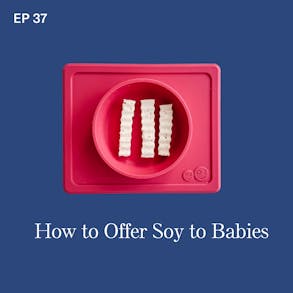
LISTEN TO THIS EPISODE
Episode Description
Soy is one of the Top 9 allergenic foods, but it often causes confusion for parents when their baby is starting solid foods: can my baby eat soy and if so, what’s the safest way to prepare it? In this episode, you’ll learn how to safely introduce soy to your baby for 2 different ages and stages, plus a look at soy milk and why it’s not ideal for babies. We’ll cover soy allergy stats, debunk some common myths, and walk through the best practices for offering this food early and often. If you’ve heard conflicting things about soy, this episode will give you the facts you need to move forward confidently.

Links from this Episode
- Food Allergy Research and Education (FARE) information page on soy and soy allergy, click here. https://www.foodallergy.org/living-food-allergies/food-allergy-essentials/common-allergens/soy
- Baby-Led Weaning with Katie Ferraro program with the 100 First Foods™ Daily Meal Plan, join here: https://babyledweaning.co/program
- Baby-Led Weaning for Beginners free online workshop with 100 First Foods™ list to all attendees, register here: https://babyledweaning.co/baby-led-weaning-for-beginners
Other Episodes Related to this Topic
- Episode 227 - When Does the Food Allergy Prevention Window Close? with @allergykidsdoc David Stukus, MD
- Episode 285 - Are Plant-Based Milks Safe for Babies?
- Episode 493 - Vegetarian Baby-Led Weaning: A Practical Guide for Plant-Based Families
Resources & Research
- American Academy of Pediatrics (AAP). Committee on Nutrition and Section on Allergy and Immunology. Addendum Guidelines for the Prevention of Peanut Allergy in the United States: Summary for Parents and Caregivers. American Academy of Pediatrics, 2019. https://www.healthychildren.org
- Gupta, Ruchi S., et al. “Prevalence and Severity of Food Allergies Among US Adults.” Pediatrics, vol. 142, no. 6, 2018, e20181235. doi:10.1542/peds.2018-1235
- Food Allergy Research & Education (FARE). “Soy Allergy.” FARE, Food Allergy Research & Education, www.foodallergy.org/living-food-allergies/food-allergy-essentials/common-allergens/soy. Accessed 30 Apr. 2025.

Latest Episodes
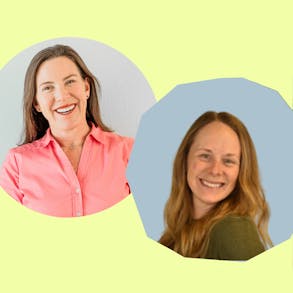
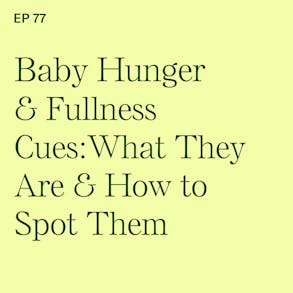
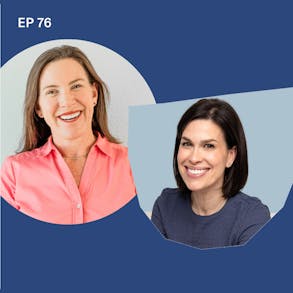
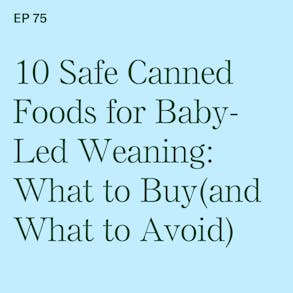
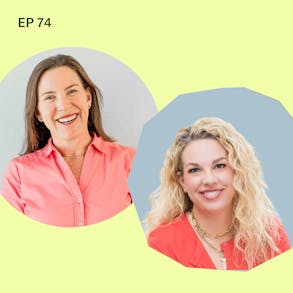
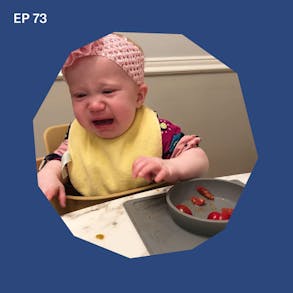
Skylight Frames (1s):
Let's be real that keeping track of anything when you have a baby is laughable. I remember forgetting my own quadruplet baby's pediatrician appointment because it had the reminder like on the sticky note that was in the diaper bag that was in the back of the van, but then I found the skylight calendar and wow, my mom brain finally has help. This Skylight calendar is a beautifully designed 15 inch digital display that syncs with all of your existing calendars. So Google, apple, outlook, you name it. It's basically like your brain, but way prettier and sorry, way more reliable. I have our skylight calendar set up in our kitchen. It shows everything like upcoming doctor's appointment visits, work calls, birthday party, RSVPs. I even color coded the events for every family member and put the what's for dinner like meal plan in there If you have toddlers who can't read yet. The Skylight also has a whole setup where you can assign emojis to different tasks on your chore chart so they know what it means and then they can check it off. And it really just starts help building independence and responsibility from an early age, because take it from me with school age kids. You want those kids to know what their schedule is and you need to know what their schedule is. Skylight Calendar makes it all possible, and with the free Skylight app, you can update on the go. So like when your friend texts you about a mom meetup, when you're one handed nursing a baby, you are not going to forget about it. The Skylight calendar will help save your sanity and your happiness is skylights happiness. So if in 120 days you are not 100% thrilled with your purchase, you can return it for a full refund and no questions asked. So right now, skylight is offering our listeners $30 off their 15 inch calendar. If you go to skylightcal.com/weaning, that's skylightcal.com/weaning for $30 off your 15 inch calendar. I'll say it one more time. skylightcal.com/weaning and get your calendar game on point now because I know if you're like me, your brain is approaching max capacity with your kids. And Skylight Calendar is pure heaven for connecting your digital and your non-digital world together.
Katie Ferraro (2m 7s):
And So if we think about the different ways in which our children, babies can potentially eat soy foods, gotta acknowledge that a lot of soy containing foods in the market today are junk foods, right? If it looks like a cookie and it tastes like a cookie, even if it's made with soy flour, it's not appropriate for your baby. So we wanna stay away from those soy foods that contain added sugar, that contain added salt. We talked about why soy milk is not an appropriate alternative for infants and for early eaters. The edamame, I know You guys love them, but those are potential choking hazard for early eaters. That's why we have to default to this other option as far as finger foods go for making soy foods safe for babies. Hey there, I'm Katie Ferraro, Registered Dietitian, college nutrition professor and mom of seven specializing in Baby-Led Weaning.
Katie Ferraro (2m 50s):
Here on thBaby-Led Weaning with Katie Ferraro podcast. I help you strip out all of the noise and nonsense about feeding, giving you the confidence and knowledge you need to give your baby a safe start to solid foods using Baby-Led Weaning. Hello there and welcome to today's episode on soy. We are gonna be talking about this potentially allergenic food, and I'm gonna give you some ideas on how you can make it safe to offer to your baby early and often, because as a potentially allergenic food, soy is one of those ones that we should be including in the baby's diet, but a lot of parents are not really sure how to safely do that.
Katie Ferraro (3m 32s):
So today I'm gonna walk you through the best ways to offer soy to your baby. I'm gonna talk about why tofu is my go-to method. Even If you are an affirm hat of tofu or you're like, I never make tofu containing foods, you're gonna love tofu as literally the easiest way to offer your baby soy. We'll talk a little bit about what the research says regarding soy allergy. We'll talk about risk and safety. If soy sounds scary, please don't worry. I'm gonna show you how to make this allergenic food safe and easy for your baby to try. If you're not already following the podcast, please do so. Click subscribe wherever you're watching or listening to this, I do two new episodes a week. On Monday, I do a mini solo, Baby-Led Weaning training episode, and every Thursday I release a longer interview style episode with another feeding expert.
Katie Ferraro (4m 18s):
I like to start each of these mini training episodes with a Baby-Led Weaning tip of the day. And today's tip, I kind of already teased it, tofu. Tofu is the single easiest way to get your baby to try. So I, I'm gonna give you some tips and ideas on how to do that safely. But If you have to cut out right now, just know, get yourself a block of tofu. It's already prepared. You literally don't have to do anything. All you have to do is cut that tofu into strips about the size of your adult pinky finger, put it in a suction mat or bowl and let your baby pick it up and feed it to themselves as a finger food for sure. Tofu does not taste like anything, but guess what? Your baby doesn't care. It's a nice soft, easy texture.
Katie Ferraro (4m 58s):
Another pro tip is you can actually use a crinkle cutter. This is my friend Dawn Winkleman. She's on the podcast a lot. She's a speech language pathologist and she also specializes in Baby-Led Weaning. She loves the crinkle cutter. You get 'em on Amazon, they're like five bucks. It adds like this jagged little edge that kind of adds a little bit more traction and makes it us just a smidge easier for your baby to pick up and feed to themselves and hang tight to the end because In this episode, I'm gonna talk a little bit about the compounds that you sometimes hear about in soy foods. Oh my gosh, they're linked to breast cancer or hormonal imbalances. But we're gonna look more closely at why that's not true and why soy actually is an important food for your baby. It's also perfectly safe, and it's one of those allergenic foods. Now, when it comes to the Top nine allergenic foods, those are the nine foods that account for about 90% of food allergy in the United States.
Katie Ferraro (5m 44s):
You probably know if you've been researching, you know how to start solid food safely, that you wanna get those allergenic foods in early and often. And here's another kind of time sensitive tip for you. You're going to want to try to get your baby all of those top nine allergenic foods before they turn 11 months of age. Okay? So the research indicates that that protective window for lowering the risk of food allergy by offering these foods, it closes somewhere around the 11 month mark. I had Dr. David Stukus, who's the leading pediatric food allergy expert in the United States. He was on talking about that protective allergy window stuff. And I wanna share that episode just in case you're like, wait, why do I need to get it done by 11 months of age?
Katie Ferraro (6m 24s):
Go take a listen to episode 227. It's called, When Does the Food Allergy Prevention Window Close? And that's with Dr. David Stukus. If you go to BW podcast.com/227, it'll take you right to that episode. So let's get started learning about soy. What is soy? Soy soybeans, members of the legume family? So foods like beans and peas, lentils, peanuts are also legumes. If you're allergic to soy, okay? It does not mean that you have a greater chance of being allergic to another legume, including peanut. Now, how common is soy allergy? Is this something that's going to happen to your baby? It is very, very unlikely. Okay? In the United States, it's estimated that approximately 0.4% of children are thought to have a soy allergy.
Katie Ferraro (7m 9s):
There's no data specific to infants. So this particular data comes from Dr. Richie Gupta, who published an article in the Journal Pediatrics in 2018. And Dr. Gupta's been on the podcast a number of times teaching about food allergies. But basically If you look at all of the other top nine allergenic foods and you put them in an order of like the most common allergens for kids to the least, soy is at the bottom. It's actually, well, soy and wheat are tied for second to last. And then sesame, which was the newest allergenic food added to our list in the United States. That's last, last at 0.2 to 0.3%. So basically your baby's not at very high risk for having a soy allergy. However, the only thing that you can do to lower your baby's risk of food allergy to soy is to actually introduce those soy containing foods to them.
Katie Ferraro (7m 54s):
And we're gonna talk about how to do that. But before that, I just wanna share one more kind of interesting, fun fact about soy allergy is it is one of the food allergies that most children tend to outgrow. So around 70% of children will actually outgrow that soy food allergy by the time they turn 10. So when should we be introducing soy to our babies? The American Academy of Pediatrics states that there's no evidence suggesting that waiting to introduce the potentially allergenic foods like soy be on four to six months of age prevents food allergy. So if we flip that statement on its head, If you look at all of the major leading health bodies, they're all recommending early introductions, so early and often.
Katie Ferraro (8m 34s):
And we sometimes talk on the podcast about, well, that's kind of confusing to parents, like how early is early and how often is often when it comes to early, you know that your baby's not safe to eat anything except infant milk. So breast milk or formula until they're six months of age and showing you those other reliable signs of readiness to eat. But once your baby is sitting up on their own and past that six month mark or the six month adjusted age mark, if your baby was born prematurely, then heck yeah, go to town on foods like soy. Okay? Now, we don't want to offer two new allergenic foods to your baby for the first time at the same time, right? 'cause If you, let's say you did soy and peanut, which are both legumes, and you did it for the first time on the same day and your baby had an allergic reaction, how would you know if it was soy or if it was peanut? So in my program, we do five new foods a week, a new fruit on Monday, a new vegetable on Tuesday, a starchy food on Wednesday, a protein food on Thursday, and then the allergenic food on Friday.
Katie Ferraro (9m 23s):
And we do that new allergenic food two times on Friday, two times on Saturday, and two times on Sunday. No other new foods across the weekend. But you do continue to reintroduce the other non-allergenic familiar foods that your baby's already tried along with that allergenic food over the course of the weekend. And the reason why that works is because then by the end of the weekend, your baby's had at least six different exposures to that potentially allergenic food. And when it's the next week, Monday, you go right back to starting a new fruit, new vegetable starchy food protein, and then another allergenic food on Friday. And so basically nine weeks into the program, your baby's not only eating 45 new foods, you're halfway almost to their a 100 First Foods. But you've also gotten through all of the Top nine allergenic foods.
Katie Ferraro (10m 5s):
And so you can do this in the first nine weeks so that by the time your baby's eight, sometimes nine months of age, you've already knocked out all of those allergenic foods. And we have you on a meal plan where you're continuing to reintroduce those allergenic foods. 'cause the other little piece of that puzzle there, it's early and often, often, meaning you don't just offer the soy containing food once. You need to do it more than once. So we'll do it six times in that initial weekend. But then we'll continue to introduce soy as your baby is progressing through the meal plan and gradually starting to eat more complex foods, including the multi textured foods. And then we're gonna be getting into a lot more ingredients and reincorporating those allergenic foods so that your baby's continuing to see them and you're doing your part to help lower the risk of food allergy. If you wanna check out that program, it's called Baby-Led Weaning with Katie Ferraro.
Katie Ferraro (10m 48s):
I have my full 100 First Foods Daily Meal Plan in there. We actually do soy for the first time as tofu in week seven of the program. So it's food number 35. So for those of you who are following along the 100 First Foods Daily Meal Plan inside of the program, if you're not there yet, you'll be getting there soon. And If you wanna check the program out so that you can get access to the 100 First Foods content library with all the videos and recipes and pictures and instructions on how to make each of the 100 First Foods safe, plus that 100 First Foods Daily Meal Plan that lots of families are following, that's all online at babyledweaning.co/program, and you can get started introducing all of the allergenic foods, including soy today. Hey, we're gonna take a quick break, but I'll be right back.
Momcozy (11m 34s):
One of my friends who recently had a baby is really committed to breastfeeding, but also really struggling with pumping. And I went with her to her lactation appointment the other day because I'm also working on my IBCLC breastfeeding credential right now too. So she let me sit in on the session and they were helping her with her pump, which a friend had given to her. And it was like a really big kind of contraption, had all these wires, it was loud, it was uncomfortable. And I was thinking about, gosh, how far breast pump technology has come these days, and how excited I was to tell her about the Air One, which is the ultra slim breast pump from Momcozy. So this is a brand trusted by over 3 million moms. So they have this thing figured out, and the Air One is designed for busy moms on the go. It's ultra slim, discrete. Finally, a pump that will not slow you down if you're a busy mom on the go. It's got this really cool smart app control. So you syn your mom cozy app to the pump. It automatically can help you switch between pumping modes. It tracks milk volume in real time. You get full collector notifications. So it's like hands-free tech enabled solution that makes pumping more efficient and effortless for today's busy mom. The air one has a silent pumping mode. It actually operates under 45 decibels. So you have quiet, discreet pumping, which is great for office spaces or public spaces, or if you're going back to work. It has a skin friendly comfort design made with this amazing soft silicone. It's finally a pleasant experience that fits all breast shapes and is not gonna irritate her skin. There's only five parts to this pump too, to clean, which is amazing. The air one is easy to assemble and maintain. It saves you time while keeping things clean. Now, Momcozy sent me an air one ahead of this ad read. I checked it out. I was like fascinated by the technology, but I do not need it since my pumping days are far behind me. So I gave it to my friend who has been raving about it. Air One is available now at target.com or at your nearest target store. That's the Momcozy Air One Ultra Slim Breast Pump. Available now at target.com or at your nearest target store, and you can learn more at momcozy.com.
Katie Ferraro (13m 43s):
Now, let's talk about the different options as far as introducing soy to your baby. I mentioned tofu. Tofu is one of my favorite ways to offer soy foods as a Baby-Led Weaning food. It's literally a block of tofu you can buy at the store, check it out next time you're there. Tofu is wonderful because A, it's affordable. B, it's got actually a pretty impressive amount of iron. Anytime you see one milligram of iron or more per serving, we call that an iron food in our program. And I don't want you to be counting the milligrams of iron that your baby is eating, but because we're offering a variety of foods and because we know that as your baby moves past the six month mark, the iron stores they got from mom at the tail end of pregnancy, those start to dip.
Katie Ferraro (14m 23s):
You've gotta be getting iron from the weaning foods that you're introducing. And while yes, animal foods like meat, if that's what your family eats, those foods contain iron. There are also some great plant food sources of iron and tofu is one of my favorite ones. So tofu checks a lot of boxes because it's a plant protein. It's got that iron in there, plus it has that all important soy protein, which is the potentially allergenic part of the food, right? So if you're offering a food to your baby, it's the protein component that's gonna potentially cause the allergy. Now, you might be worrying, well, wait a minute, what if my baby has an allergic reaction to soy? Okay, if your baby is going to have an allergic reaction to a food, the vast majority of the reactions will occur within minutes and up to no more than two hours following ingestion.
Katie Ferraro (15m 3s):
So if you're offering your baby tofu for the first time, cut those pieces and into strips about the size of your adult pinky finger. Put 'em in that suction mat or herbal, let your baby use their whole hand or their Palmer grasp 'cause they don't have their pinch or grasp yet. Early on when you start solid foods, they're gonna pick it up and feed it to themselves. If there's allergic reaction, again, it will be within minutes and up to no more than two hours. It'll also generally not be on the first time your baby eats the tofu, okay? It'll be on the second or the subsequent time. That's why we want to do it six times over the course of the weekend. Keep an eye on them for up to two hours following that ingestion. Usually after that, you know, full exposure period of six different times, the baby's tried the food, you're pretty sure they're not allergic to soy. And you can move on to the next allergenic food.
Katie Ferraro (15m 43s):
If you're inside of our program in phase one, which is the first eight weeks of Baby-Led Weaning those recipes of the foods in phase one, they're geared towards your baby who's just starting out with solid foods. So we've got the chili, garlic, tofu strips recipe for you. And If you haven't gotten around to doing soy and your baby's a little bit older, if you've moved into phase two, which is the second eight weeks of Baby-Led Weaning, that's when your baby's eating. Now these combination multi textured foods, we've got a recipe for tofu, cucumber sandwiches. We've also got a tofu lasagna recipe and a tofu pancakes recipe. Those contain multiple allergenic foods. So you're reintroducing the ones that you tried earlier. Again, you can check that all out in the Baby-Led Weaning with Katie Ferraro program at babyledweaning.co/program.
Katie Ferraro (16m 28s):
Now, let's talk about soy milk, because for a lot of people, the only soy food that they might be familiar with is soy milk. Now, we never want to advocate for replacing infant milk. That's breast milk or formula with any other fluid your baby needs breast milk or formula exclusively for the first six months of their life. And even after you start solid foods, that infant milk still continues to be a very important source of nutrition for your baby. Okay? But even fortified soy milk lacks the full nutrient profile needed for infants. Now, after age one, if for whatever reason you decide not to transition to cow's milk, and we have lots of content here on the podcast and in the program about how to transition to cow's milk, if that's working for you, or If you decide to go the plant-based milk alternative route, that's great too.
Katie Ferraro (17m 9s):
But again, none of this happens until after age one. So even after age one, unsweetened fortified soy milk may be used in some cases, okay? You are always gonna wanna consult with your own pediatrician or a pediatric dietitian. For babies that have a cow's milk protein allergy, they may need to consider those products. But soy milk doesn't work as far as introducing your baby to the potentially allergenic foods soy. Now, why is that the case? First, a lot of soy products, including alternative milk products, will have added salt and added sugar to ingredients of which we want to avoid for babies when it comes to soy milk. Another problem is that because the soy milk is made from cooked soybeans, it does contain some soy protein, but it doesn't have a lot of soy protein.
Katie Ferraro (17m 57s):
If we look at the average amount that a baby is going to drink, right? If you use the EZPZ tiny cup, which is a two ounce cup, and you fill that halfway up, so one ounce, there's gonna be less than one gram of that soy protein in that amount, okay? And of course, we don't want to get in the habit of offering fluid milk alternatives to babies less than one. So my suggestion for you is to stick to tofu as the ideal way to start offering your baby soy foods. Now, what about ami? Sometimes parents will say, I love those boiled soybeans. If you go to, you know, a Japanese restaurant or you buy 'em at the grocery store, I know my kids love them for a snack. They're really into like popping them out of the shell at each other, which is so annoying. But the thing with AMI is that they're very small pieces, right?
Katie Ferraro (18m 40s):
AMI are small, cooked green soybeans, and you can cook 'em so they're really soft. So they could technically be soft and safe enough for your baby, but because they're so small, they're not inappropriate first food for early eaters, right? You require a pinch or grasp and the ability to utilize your forefinger and your thumb to pick up soybeans or ami. But early eaters, your 6, 7, 8 month old baby, they don't have their pencil or grasp yet. So the Edam mommy is not inappropriate finger food for them. Not to mention that a very small piece of food like the size of an ami, that food can be a potential choking hazard for an early eater because it's the exact size that could potentially occlude their airway. So we do those longer pieces, those finger food strips, the pieces about the size of your adult pinky finger, that's ideal for your early eater.
Katie Ferraro (19m 25s):
So let's wrap up by answering the burning question. A lot of parents have, like I heard that soy milk and soy foods contain phytoestrogens. Okay? They're also called plant estrogens or isoflavones. And there have been reports over the years about phytoestrogens may being linked to breast cancer. Now, other studies have shown that isoflavones might actually be protective against diseases like breast and endometrial and prostate cancer, okay? But as for the excessive amounts of phytoestrogens and the thought that, oh gosh, they could have a hormonal effect on kids, the journal pediatrics, that's the American Academy of Pediatrics Journal, points out that there is no evidence that the isoflavones in soy have any negative effect on pediatric hormones or their development.
Katie Ferraro (20m 5s):
Okay? So you do not need to be fearful of offering your baby soy containing foods in moderation. Now, I also wanna point out that there's a lot of soy junk food on the market. If it looks like a cookie and it tastes like a cookie, even if it's made with soy flour, okay? It's a cookie. So let's be mindful of the types of soy foods that we're offering, especially for babies. We wanna stay away from added sugar and added salt. We wanna stay away from offering alternatives to infant milk, like fluid plant milks like soy milk. We wanna stay away from small pieces of food for early eaters like ami. We do AMI in our program for older babies in phase two and phase three. But if you're looking for a way to safely introduce soy foods to your baby at six, seven, or eight months of age, my suggestion is that you stick to tofu.
Katie Ferraro (20m 46s):
If you'd like to check out the show notes for this episode, I've got all of the resources and the references that I mentioned there at blwpodcast.com/37. I wanna say a special thank you to our partners at AirWave Media. If you like podcasts that feature food and science, and using your brain, check out some of the podcasts from AirWave. If you don't yet have a copy of my original 100 First Foods list at the bottom there in the potentially Allergenic Foods section, there's 20 different ways that you can introduce the Top nine allergenic foods to your baby. You can grab a copy of that 100 First Foods list on my free online workshop called Baby-Led Weaning for Beginners. The signup link for that is at babyledweaning.co/workshop. All the links that you need will also be in the description underneath this episode. Thank you so much for listening, and I'll see you next time
Culture Kids Podcast (21m 41s):
Ever dreamed of traveling the world with your children without leaving your home. Tune into Culture Kits podcast to embark on an incredible adventure right where you are. At Culture Kits, we collaborate with cultural organizations, authors and educators from all over the world to expand our children's horizons, inspiring them to embrace our differences while bridging communities worldwide. And that's Culture Kids Podcast. Here's your passport. Let's go.
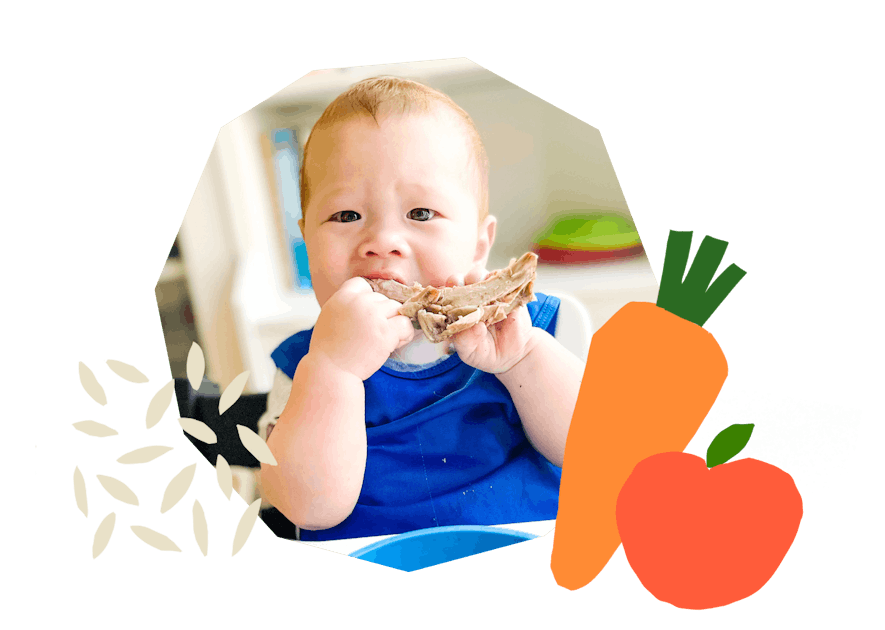
The Program Baby-Led Weaning with Katie Ferraro
A step-by-step digital program for starting solid foods safely and navigating the original 100 FIRST FOODS™ meal plan with baby-led weaning.
 EXPERT-LED, PROVEN APPROACH TO EATING REAL FOOD
EXPERT-LED, PROVEN APPROACH TO EATING REAL FOOD CONCISE VIDEO TRAININGS TO MASTER BABY-LED WEANING
CONCISE VIDEO TRAININGS TO MASTER BABY-LED WEANING 100 FIRST FOODS DAILY MEAL PLAN WITH FOOD PREP VIDEOS
100 FIRST FOODS DAILY MEAL PLAN WITH FOOD PREP VIDEOS
Baby-Led Weaning for Beginners Free Workshop
Is your baby ready to start solid foods, but you’re not sure where to start? Get ready to give your baby a solid foundation to a lifetime of loving real food…even if you’re feeling overwhelmed or confused about this next stage of infant feeding.
Get baby-led weaning recipes and tips delivered to your email inbox.

